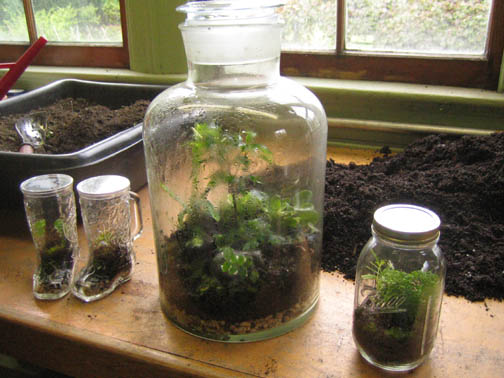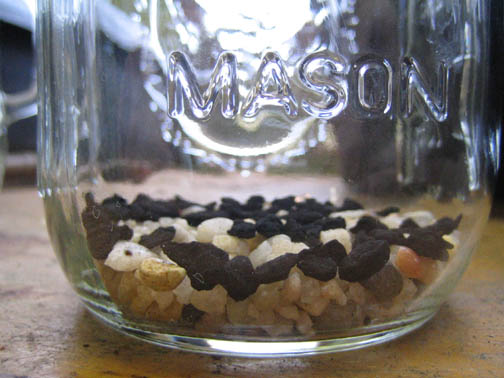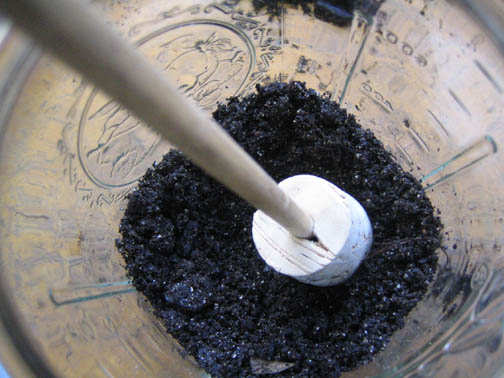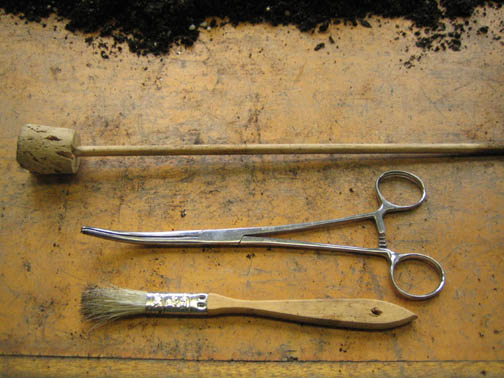Terrariums are cool (again)
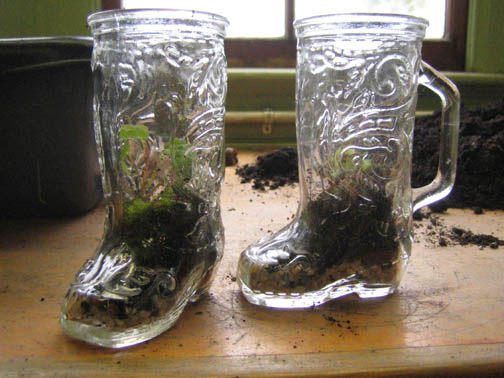 Do you remember the 1970’s? I have hazy orange and brown memories of fads like macrame, yoga, clogs, avocado colored kitchen appliances, silk-screened monochrome bull’s-eye wallhangings, and houseplant jungles. What goes around comes around. For some, bell bottoms and backyard vegetable gardens never went out of style. Others of us rediscover trends and treasures when the time is right. I don’t know who decided that enough time had passed (was it Martha Stewart?) but terrariums are all the rage again. I think they’re so cool I have to wonder why they ever went out of style in the first place. And I have to admit that I’ve gone a little nuts. Some people put up jars of tomato sauce. I put up jars of mini indoor gardens.
Do you remember the 1970’s? I have hazy orange and brown memories of fads like macrame, yoga, clogs, avocado colored kitchen appliances, silk-screened monochrome bull’s-eye wallhangings, and houseplant jungles. What goes around comes around. For some, bell bottoms and backyard vegetable gardens never went out of style. Others of us rediscover trends and treasures when the time is right. I don’t know who decided that enough time had passed (was it Martha Stewart?) but terrariums are all the rage again. I think they’re so cool I have to wonder why they ever went out of style in the first place. And I have to admit that I’ve gone a little nuts. Some people put up jars of tomato sauce. I put up jars of mini indoor gardens.
Ingredients: clear glass jar (water bottle, fish bowl, jam jar, brandy snifter…) or a wardian case (looks like a mini greenhouse), fish gravel for drainage, fish tank charcoal (activated carbon) for purity, moistened soil (one part compost to 2 or 3 parts potting mix), any landscape elements you like (rocks, tiny houses, plastic dinosaurs…) and plants that love warm, humid conditions. — Indoor winter heat is tough on some plants. I had a little eyelash begonia that was a gasp away from death and when I put its last nubbin in a mason jar, it immediately decided to thrive. Look around and see what needs rescue. And go shopping! Some of your local nurseries stock perfect terrarium plants (we go to Peckham’s Greenhouse in Little Compton, RI) and there are plenty of mail order places too (such as Logee’s and Kartuz)
Place a layer of gravel, lightly topped with a layer of charcoal in the bottom of a clean container. The depth of this layer depends on the size of the container and should probably be 1/2″ to and 1″ for decent drainage.
Thickness of the soil layer also depends on the size of the container. It should be deep enough to hold the roots of your plants while not taking up more than the bottom third (including drainage layer) of your container. Terrariums are all about balance. Plants take in water and transpire it out. In a perfect little world, they essentially water themselves. I’ve gone for months without having to water some of my jars! When you choose and plant your babies, make sure they don’t take up any more than half of the air space in the jar. Plants that grow by leaps and bounds should be tended regularly and clipped back so they don’t strangle themselves or their neighbors. And fertilizing is a definite no-no — it wrecks the balance and plants grow too quickly.
Water your plants in just a little to make sure the soil around their roots isn’t full of air pockets and cover the jar (poke holes or leave the lid a tiny bit open for fresh air transfer), and place it in a bright but no-full-sun spot. You should be able to see the transpiration almost immediately as fog on the glass. If your terrarium ever gets so foggy that you can’t see the plants, uncover it for a while (and think about whether the plants need a trim).
Once you start making terrariums, it might be hard to stop! (or is it just me?)